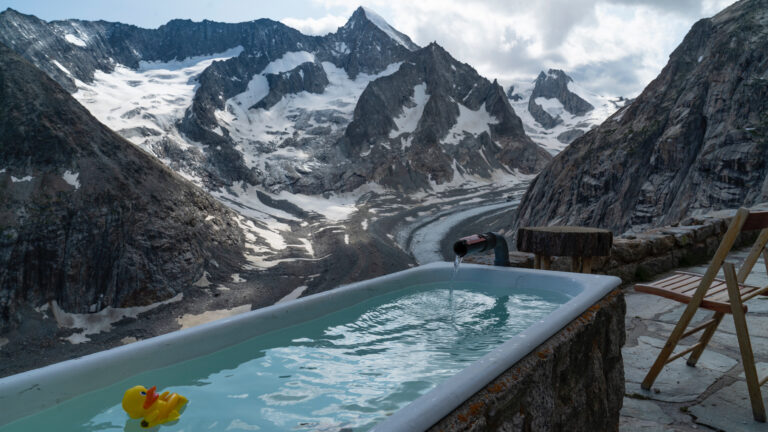5 Cold Plunge Benefits for Reducing Inflammation and Pain

In recent years, cold plunging—also known as cold water immersion—has taken the wellness world by storm. This invigorating practice involves immersing the body in cold water for short periods. Typically done after physical activity, its rising popularity is no surprise, given the cold plunge benefits of reducing inflammation and alleviating pain.
Whether you’re active and consistently pushing limits, or you suffer from chronic illnesses or conditions, everyone faces Inflammation and pain throughout their life. Finding effective ways to manage these symptoms helps to provide a higher quality of life, better overall wellness, and optimal physical performance. Cold plunging offers a natural and powerful solution to pain and inflammation, making it an option for those exploring alternative therapies.
Explore the benefits of cold plunges for reducing inflammation and pain. By understanding these advantages, you can make informed decisions about incorporating cold water therapy into your wellness routine. For a more in-depth look at the broader benefits of cold plunging, check out our comprehensive guide on Cold Plunge Benefits.

Cold Plunge on the Body
When entering the water during cold water therapy, a shock runs through your system as a result of the temperature change. Your body has to quickly adjust to the cold water to retain body heat for the brain and organs to function. Cold plunges turn on your natural survival instincts and as a result, you are able to reap the benefits of cold water immersion.
Incorporating ice baths and cold plunges into your wellness routine offers numerous benefits to help you in many aspects of your life. They have been shown to help reduce anxiety, relieve stress, and improve mental clarity. Cold water immersion is also known to improve sleep quality and enhance your mood by releasing beneficial hormones such as dopamine and melatonin.
Studies show that cold plunges are beneficial to your physical health. Regular ice bathing can help boost your immune system, improve your circulation, and benefit your nervous system. However, cold water immersion therapy is best known for its ability to relieve pain and inflammation throughout the body.
Here are five benefits of a cold plunge for inflammation and pain.

1. Reduced Muscle Soreness and Recovery
As you move and work, whether through exercise or extended use, small tears damage your muscles. This damage causes inflammation and pain. This natural occurrence helps to build up strength over time, improving overall health and mobility. The downside, however, is that these types of activity can cause pain.
Some people notice muscle pain shortly after they workout while others often feel pain later thanks to delayed-onset muscle soreness (DOMS). Studies have shown that a great way to prevent DOMS and help sore muscles recover faster is with an ice bath. How cold water immersion helps with muscle recovery is through vasoconstriction. The cold water temperature causes blood vessels to constrict, which helps reduce inflammation and swelling in the muscles. It limits the amount of blood flow to the affected areas, thereby reducing inflammation and pain.
A cold plunge for reducing muscle soreness after workouts is a growing health trend for athletes and active individuals who need to maintain high levels of performance. The combination of immediate pain relief and long-term recovery benefits makes cold plunging an essential tool for muscle health. Many athletes and fitness professionals swear by cold water immersion therapy for this very reason.
2. Decreased Joint Inflammation
From arthritis to tendinitis, joint pain can severely and negatively impact a person’s day-to-day life. The pain, swelling, and inflammation can hinder a person’s ability to use their hands, walk around the home, or use a staircase. Many who suffer from these chronic conditions turn to medications, which can have side effects and aren’t recommended for long-term use, and other therapies for temporary relief. Cold water immersion therapy, however, is a natural remedy for joint inflammation with cold therapy.
Thanks to vasoconstriction and the constricting of the blood vessels, blood flow is reduced to inflamed areas, including joints. By reducing inflammation, cold water immersion can lower pain, increase range of motion, and improve overall quality of life. Many physical therapists and sports medicine specialists recommend cold plunges for arthritis and tendinitis treatment as part of a comprehensive plan. They emphasize the importance of combining cold water therapy with other treatments, such as physical therapy and exercise, to achieve the best results.
3. Enhanced Pain Relief
Cold plunges are highly effective in providing pain relief, making them a valuable tool for managing various types of pain. According to Johns Hopkins Medicine, the cold numbs nerve endings and reduces the transmission of pain signals to the brain, offering immediate relief. This numbing effect is particularly beneficial for those seeking quick, natural pain management solutions.
Cold water treatment for pain, targets various types of chronic pain conditions like fibromyalgia or chronic back pain. These conditions often require consistent pain management, and cold water therapy provides a natural alternative to medications. For acute injuries, such as sprains, strains, or muscle tears, this treatment helps promote faster healing as well as reducing pain.
To maximize pain relief from cold plunges, consider combining cold water immersion therapy with other treatments such as physical therapy, massage, or stretching. This multi-faceted approach can provide more comprehensive relief.
4. Alleviation of Chronic Headaches
Cold plunging can also be effective in alleviating chronic headaches, particularly tension headaches and migraines, which are often linked to inflammation and poor blood flow. The cold temperature leads to vasoconstriction in the head and neck region. Over time, vasoconstriction improves blood circulation. By reducing inflammation and improving circulation, cold plunging can decrease the frequency and intensity of headaches.
Using cold plunges to alleviate chronic headaches and migraines is an alternative to relying on medication. For those who suffer from chronic headaches, incorporating cold plunges into a regular wellness routine could provide significant relief and improve overall quality of life.
5. Reduction of Nerve Pain
For those suffering from nerve pain, you can benefit from a cold plunge for pain relief from conditions such as sciatica or neuropathy. Cold water helps numb painful areas, reducing pain signals and minimizing inflammation around the nerves. Regular cold water immersion can help reduce flare-ups of nerve pain and make daily activities more manageable.
This treatment is particularly beneficial for individuals who experience chronic nerve pain and are seeking non-pharmaceutical methods of pain management. By focusing on these areas, cold plunging can be a powerful tool in the fight against nerve pain, contributing to a better quality of life for those affected.

Tips for Maximizing Cold Plunge Benefits
To maximize the cold plunge benefits, it is important to follow some practical tips to make the most out of your cold plunge therapy.
Combine Cold Plunge with Other Therapies
Physical therapy, massage therapy, or even simply stretching can enhance the overall effectiveness of a cold plunge. Adding these therapies to your wellness routine can help improve blood flow, soothe muscle aches, and limit the risk of injury. This multi-faceted approach addresses pain from different angles, providing more comprehensive relief.
Recommended Ice Bath Temperature
The ideal temperature for a cold plunge is typically between 50 to 59 degrees Fahrenheit (10 to 15 degrees Celsius). This range is cold enough to provide the desired numbing and anti-inflammatory effects without causing excessive discomfort.
Cold Water Plunge Duration
The recommended duration for a cold plunge is usually between 10 to 15 minutes, depending on individual tolerance and the severity of the inflammation and pain. Keep in mind that a longer ice bath or cold plunge increases the chances of an adverse reaction, such as hypothermia.
Cold Plunge Frequency
Listen to your body and adjust the frequency of cold plunges based on your needs. For chronic pain, regular cold water immersion sessions, such as two to three times a week, can provide consistent relief. For acute injuries, more frequent sessions may be necessary initially, followed by a gradual reduction as the injury heals.
Cold Water Immersion Safety
Always consult with your medical professionals and learn how to safely use cold water therapy for pain management before adding it to your wellness routine. While the pain relief and inflammation reduction benefits are great, it’s important to understand the risks of cold plunge. Hypothermia and cardiovascular stress are significant concerns when using cold water therapy. Listen to your body. If you start to feel uncomfortable or show symptoms of hypothermia, leave the water and begin warming up.
Another safety measure to follow is to have someone with you when you do a cold water plunge. This way, if there is a medical emergency, someone is there to help. Also, always enter the cold water feet first, as it helps prevent drowning.
Cold Plunge Tub
There are many different ways to do cold water therapy at home. You can invest in an ice bath tub or ice bath bucket. You can use a swimming pool if the temperature is correct. But the easiest and least expensive way to take a cold plunge is in your bathtub or shower. When beginning cold water therapy, you will want to start with short durations. The shower is perfect for this as you can easily step in and out. When you are ready to sit for longer or really want to immerse your whole body, simply fill your tub with ice and water until it is the correct temperature.
The Correct Gear
Having the correct gear with you during your cold plunge will help keep you protected and comfortable both in and out of the water. First, even if you are plunging in your home, consider wearing shorts and a shirt to protect your skin from the cold ice. Sandals can also help keep your toes protected. Next, you will want to remove your wet clothes after exiting the water, so have dry towels nearby. After drying off, putting on a dry outfit will help you warm up faster.
Finally, consider having a warm drink to sip afterward. This will help with your Cold plunge recovery. It will also help you feel cozy and relaxed afterward, which will help keep your cortisol down and aid you in getting better quality sleep.
Natural and Effective Relief
Cold plunging offers a multitude of benefits for reducing inflammation and pain, making it a valuable addition to any wellness routine. Whether you are an athlete looking to enhance recovery, someone with chronic joint issues seeking relief, or an individual dealing with chronic headaches, cold water therapy offers natural and effective relief.
Cold plunging is more than just a trend—it’s a versatile and valuable practice that can provide substantial benefits for both body and mind. With the support of scientific research and practical advice, you can confidently explore cold water therapy as a means to enhance your wellness journey. By incorporating cold plunges into your regimen, you can experience significant improvements in your physical health and overall quality of life.






